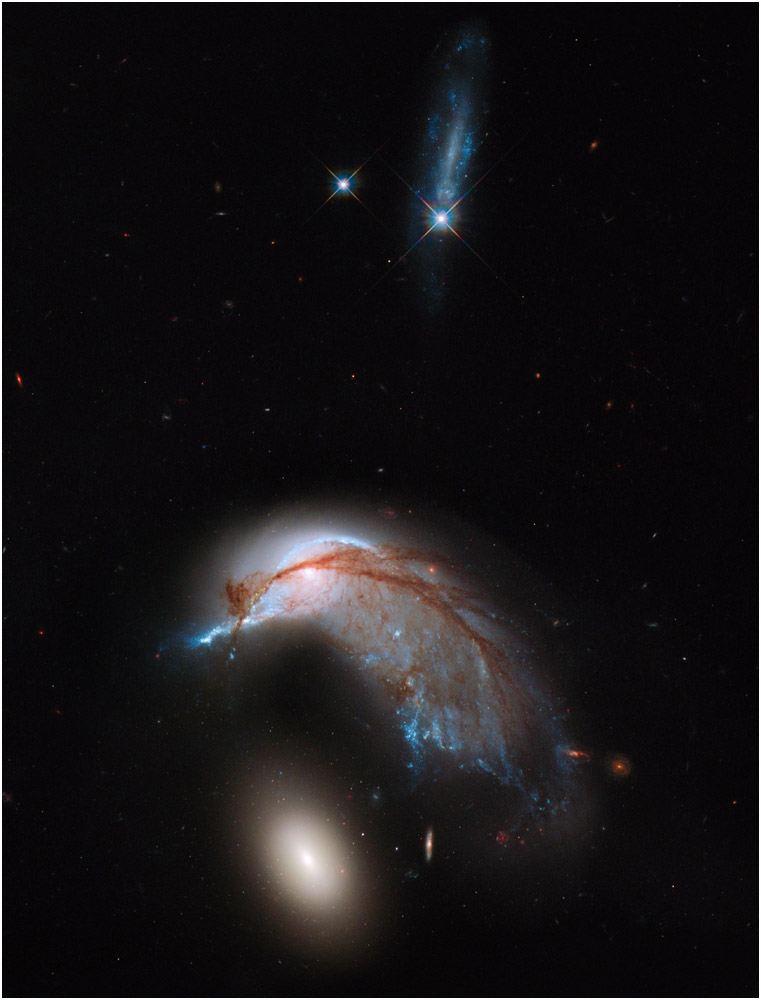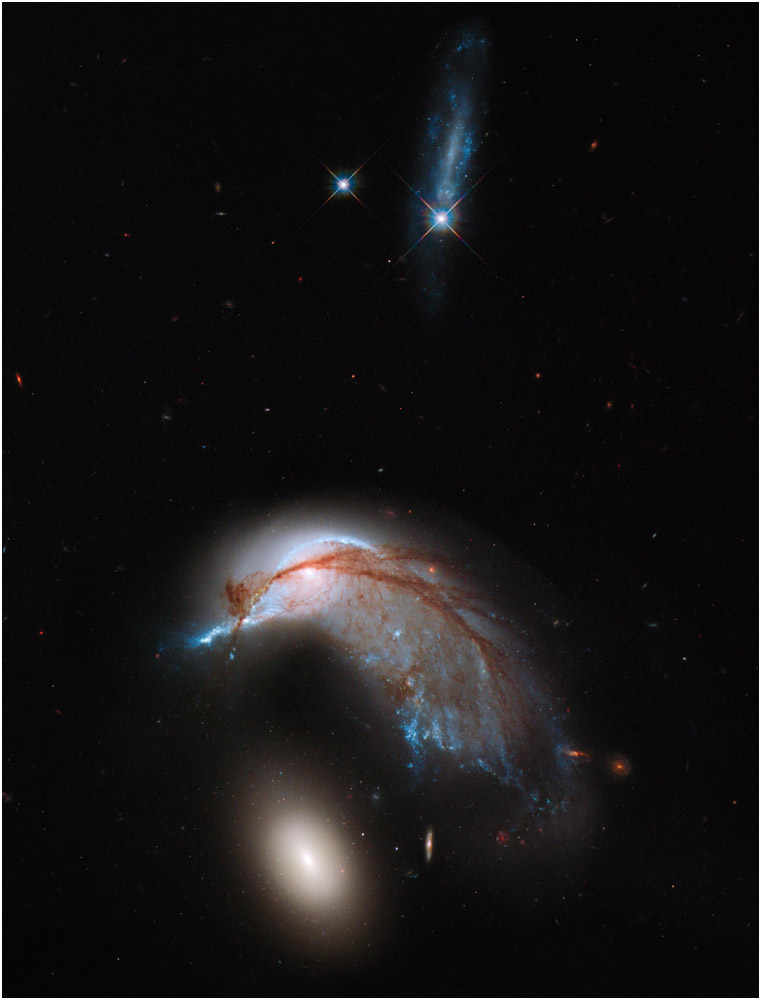
Amateur astronomers call it the Penguin, and no wonder. Even through a good-size backyard telescope, that’s exactly what seems to be out there, hanging in distant space 326 million light years from Earth. With the clear-eyed vision of the Hubble Space Telescope, the resemblance is even more striking: it’s as though some cosmic artist has captured a bright-eyed, sharp-beaked bird leaning protectively over a reddish egg, with two stars — one shooting — in the skies above.
Both bird and egg are fully certified galaxies, though, lying in the constellation Hydra. The bird is a spiral galaxy, officially known as NGC 2936, and it would normally look like the Milky Way — a great, majestically spinning pinwheel made up of hundreds of billions of stars.
But the egg has changed all that. It’s a blob-shaped elliptical galaxy, NGC 2937, and its gravity has pulled and elongated the spiral, stretching one side into a sharp, beak-shaped projection and smearing the other side into the penguin’s body. (The reddish streaks are clouds of interstellar dust that formerly permeated the galaxy’s spiral arms). The two bright spots hovering above the penguin’s head are plain old stars within the Milky Way that just happen to lie in the same direction as the two galaxies — and the streak that seems to be flying away from the right-hand star is yet another galaxy, far in the background.
(MORE: Meet the Itsy-Bitsy, Teeny-Weeny Galaxy)
Back in the 1960s, astronomer Halton Arp included this weird configuration in his Atlas of Peculiar Galaxies, but as telescopes have gotten more powerful, scientists now know that such distorted shapes are usually caused when two or more galaxies venture too close to each other, “exchanging matter and causing havoc” as a press release puts it.
The explanation is prosaic, but the image, taken recently in both infrared and visible light by the Hubble’s Wide Field Planetary Camera 3, is anything but. It’s just one more in a long list of space objects that look at least passingly biological — the Horsehead Nebula, the Crab Nebula, the Cat’s Eye Nebula, Jupiter’s moon Europa (which looks something like a bloodshot eyeball), and the infamous Face on Mars are just a few examples. Even the structure of the universe itself resembles the structure of the human brain, according to some scientists.
It’s no surprise, though: humans are hard-wired to see patterns in nature. That’s why we see all manner of creatures, not just in the heavens, but also in clouds. It’s a consequence of evolution — but it also transforms the world around us into a sort of living poetry.
(PHOTOS: The Solar-Powered Plane Soars Across America)
Michael D. Lemonick is a regular contributor to TIME, writing on science, space and technology.

More Must-Reads from TIME
- Donald Trump Is TIME's 2024 Person of the Year
- TIME’s Top 10 Photos of 2024
- Why Gen Z Is Drinking Less
- The Best Movies About Cooking
- Why Is Anxiety Worse at Night?
- A Head-to-Toe Guide to Treating Dry Skin
- Why Street Cats Are Taking Over Urban Neighborhoods
- Column: Jimmy Carter’s Global Legacy Was Moral Clarity
Contact us at letters@time.com